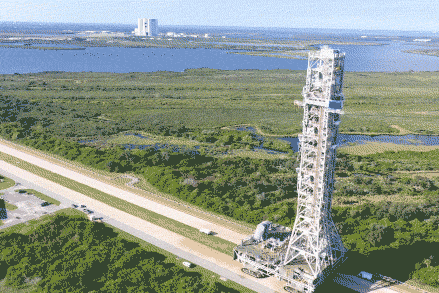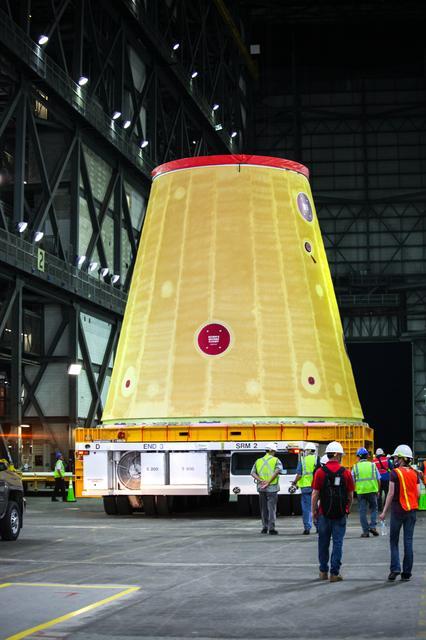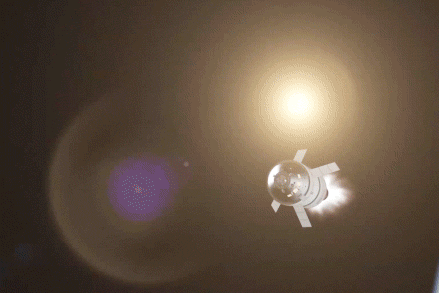Our Space Launch System (SLS) rocket is coming together at the agency’s Kennedy Space Center in Florida this summer. Our mighty SLS rocket is set to power the Artemis I mission to send our Orion spacecraft around the Moon. But, before it heads to the Moon, NASA puts it together right here on Earth.

Read on for more on how our Moon rocket for Artemis I will come together this summer:

How do crews assemble a rocket and spacecraft as tall as a skyscraper? The process all starts inside the iconic Vehicle Assembly Building at Kennedy with the mobile launcher. Recognized as a Florida Space Coast landmark, the Vehicle Assembly Building, or VAB, houses special cranes, lifts, and equipment to move and connect the spaceflight hardware together. Orion and all five of the major parts of the Artemis I rocket are already at Kennedy in preparation for launch. Inside the VAB, teams carefully stack and connect the elements to the mobile launcher, which serves as a platform for assembly and, later, for fueling and launching the rocket.

Because they carry the entire weight of the rocket and spacecraft, the twin solid rocket boosters for our SLS rocket are the first elements to be stacked on the mobile launcher inside the VAB. Crews with NASA’s Exploration Ground Systems and contractor Jacobs team completed stacking the boosters in March. Each taller than the Statue of Liberty and adorned with the iconic NASA “worm” logo, the five-segment boosters flank either side of the rocket’s core stage and upper stage. At launch, each booster produces more than 3.6 million pounds of thrust in just two minutes to quickly lift the rocket and spacecraft off the pad and to space.

In between the twin solid rocket boosters is the core stage. The stage has two huge liquid propellant tanks, computers that control the rocket’s flight, and four RS-25 engines. Weighing more than 188,000 pounds without fuel and standing 212 feet, the core stage is the largest element of the SLS rocket. To place the core stage in between the two boosters, teams will use a heavy-lift crane to raise and lower the stage into place on the mobile launcher.
On launch day, the core stage’s RS-25 engines produce more than 2 million pounds of thrust and ignite just before the boosters. Together, the boosters and engines produce 8.8 million pounds of thrust to send the SLS and Orion into orbit.

Once the boosters and core stage are secured, teams add the launch vehicle stage adapter, or LVSA, to the stack. The LVSA is a cone-shaped element that connects the rocket’s core stage and Interim Cryogenic Propulsion Stage (ICPS), or upper stage. The roughly 30-foot LVSA houses and protects the RL10 engine that powers the ICPS. Once teams bolt the LVSA into place on top of the rocket, the diameter of SLS will officially change from a wide base to a more narrow point — much like a change in the shape of a pencil from eraser to point.

Next in the stacking line-up is the Interim Cryogenic Propulsion Stage or ICPS. Like the LVSA, crews will lift and bolt the ICPS into place. To help power our deep space missions and goals, our SLS rocket delivers propulsion in phases. At liftoff, the core stage and solid rocket boosters will propel Artemis I off the launch pad. Once in orbit, the ICPS and its single RL10 engine will provide nearly 25,000 pounds of thrust to send our Orion spacecraft on a precise trajectory to the Moon.

When the Orion stage adapter crowns the top of the ICPS, you’ll know we’re nearly complete with stacking SLS rocket for Artemis I. The Orion Stage Adapter is more than just a connection point. At five feet in height, the Orion stage adapter may be small, but it holds and carries several small satellites called CubeSats. After Orion separates from the SLS rocket and heads to the Moon, these shoebox-sized payloads are released into space for their own missions to conduct science and technology research vital to deep space exploration. Compared to the rest of the rocket and spacecraft, the Orion stage adapter is the smallest SLS component that’s stacked for Artemis I.

Finally, our Orion spacecraft will be placed on top of our Moon rocket inside the VAB. The final piece will be easy to spot as teams recently added the bright red NASA “worm” logotype to the outside of the spacecraft. The Orion spacecraft is much more than just a capsule built to carry crew. It has a launch abort system, which will carry the crew to safety in case of an emergency, and a service module developed by the European Space Agency that will power and propel the spacecraft during its three-week mission. On the uncrewed Artemis I mission, Orion will check out the spacecraft’s critical systems, including navigation, communications systems, and the heat shield needed to support astronauts who will fly on Artemis II and beyond.

The path to the pad requires many steps and check lists. Before Artemis I rolls to the launch pad, teams will finalize outfitting and other important assembly work inside the VAB. Once assembled, the integrated SLS rocket and Orion will undergo several final tests and checkouts in the VAB and on the launch pad before it’s readied for launch.
The Artemis I mission is the first in a series of increasingly complex missions that will pave the way for landing the first woman and the first person of color on the Moon. The Space Launch System is the only rocket that can send NASA astronauts aboard NASA’s Orion spacecraft and supplies to the Moon in a single mission.
Make sure to follow us on Tumblr for your regular dose of space!
source: nasa.tumblr.com